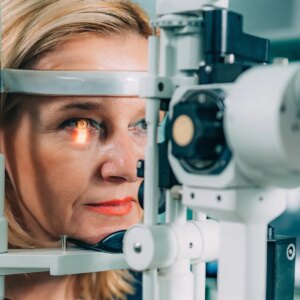
By ROBBIE PEARL
Soon after Apple released the original iPhone, my father, an unlikely early adopter, purchased one. His plan? “I’ll keep it in the trunk for emergencies,” he told me. He couldn’t foresee that this device would eventually replace maps, radar detectors, traffic reports on AM radio, CD players, and even coin-operated parking meters—not to mention the entire taxi industry.
His was a typical response to revolutionary technology. We view innovations through the lens of what already exists, fitting the new into the familiar context of the old.
Generative AI is on a similar trajectory.
As I planned the release of my new book in early April, “ChatGPT, MD: How AI-Empowered Patients & Doctors Can Take Back Control of American Medicine,” I delved into the promise and perils of generative AI in medicine. Initially, I feared my optimism about AI’s potential might be too ambitious. I envisioned tools like ChatGPT transforming into hubs of medical expertise within five years. However, by the time the book hit the shelves, it was clear that these changes were unfolding even more quickly than I had anticipated.
Three weeks before “ChatGPT, MD” became number one on Amazon’s “Best New Books” list, Nvidia stunned the tech and healthcare industries with a flurry of headline-grabbing announcements at its 2024 GTC AI conference. Most notably, Nvidia announced a collaboration with Hippocratic AI to develop generative AI “agents,” purported to outperform human nurses in various tasks at a significantly lower cost.
According to company-released data, the AI bots are 16% better than nurses at identifying a medication’s impact on lab values; 24% more accurate detecting toxic dosages of over-the-counter drugs, and 43% better at identifying condition-specific negative interactions from OTC meds. All that at $9 an hour compared to the $39.05 median hourly pay for U.S. nurses.
Although I don’t believe this technology will replace dedicated, skilled, and empathetic RNs, it will assist and support their work by identifying when problems unexpectedly arise. And for patients at home who today can’t obtain information, expertise and assistance for medical concerns, these AI nurse-bots will help. Although not yet available, they will be designed to make new diagnoses, manage chronic disease, and give patients a detailed but clear explanation of clinician’ advice.
These rapid developments suggest we are on the cusp of technology revolution, one that could reach global ubiquity far faster than the iPhone. Here are three major implications for patients and medical practitioners:
1. GenAI In Healthcare Is Coming Faster Than You Can Imagine
The human brain can easily predict the rate of arithmetic growth (whereby numbers increase at a constant rate: 1, 2, 3, 4). And it does reasonably well at comprehending geometric growth (a pattern that increases at a constant ratio: 1, 3, 9, 27), as well.
But even the most astute minds struggle to grasp the implications of continuous, exponential growth. And that’s what we’re witnessing with generative AI.
Imagine, for example, a pond with just one lily pad. Assuming the number of lilies will double every night, then the entire pond will be covered in just 50 days. Yet, on day 43, you would barely notice the green plants with only 1% of the pond’s surface covered. It seems almost impossible to imagine that just seven days later, the lily pads will completely obscure the water.
Experts project that AI’s computational progress will double roughly every year, if not faster. But even with conservative projections, ChatGPT and similar AI tools are poised to be 32 times more powerful in five years and over 1,000 times more powerful in a decade. That’s equivalent to your bicycle traveling as fast as a car and then, shortly after, a rocket ship.
This rate of advancement proves challenging for both healthcare providers and patients to comprehend, but it means that now is the time to prepare for what’s coming.
2. GenAI Will Be Different Than Past AI Models
When assessing the transformative potential of generative AI in healthcare, it’s crucial not to let past failures, such as IBM’s Watson, cloud our expectations. IBM set out ambitious goals for Watson, hoping it would revolutionize healthcare by assisting with diagnoses, treatment planning, and interpreting complex medical data for cancer patients.
I was highly skeptical at the time, not because of the technology itself, but because Watson relied on data from electronic medical records, which lack the accuracy needed to make reliable “narrow AI” diagnoses and recommendations.
In contrast, generative AI leverages a broader and more useful array of information sources. It not only pulls from published, peer-reviewed medical journals and textbooks but also will be able to integrate real-time information from global health databases, ongoing clinical trials, and medical conferences. It will soon incorporate continuous feedback loops from actual patient outcomes and clinician input. This extensive data integration will allow generative AI to continuously stay at the forefront of medical knowledge, making it fundamentally different from its predecessors.
That said, generative AI will require a couple more generations before it can be widely used without direct clinician oversight. But Nvidia’s bold entry into healthcare signals a long-overdue willingness among tech companies to navigate the legal and regulatory hurdles of healthcare. Once an AI clinician chatbot is available, multiple other companies will quickly follow.
3. GenAI In Healthcare Will Be Ubiquitous (Hospital, Office And Home)
Just as my father never imagined that his iPhone (stored in his trunk) would evolve into an essential tool for navigating life, many Americans struggle to envision the transformative impact generative AI will have on healthcare.
The concept of accessing medical advice and expertise continuously—affordably, reliably, and conveniently around the clock—represents such a departure from current healthcare models that it’s easy for our minds to dismiss it as far-fetched. Yet it’s becoming increasingly clear that these capabilities are not just possible, but likely.
Daily, I receive feedback from both clinicians and patients who have interacted with current generative AI tools. Nearly all report that the responses, particularly when prompted effectively, align closely with clinician recommendations. This is a testament to the evolving accuracy and reliability of generative AI in healthcare settings, and it promises a revolution in medical care delivery in the near future.
A decade from now, we will look back at today’s skepticism in much the same way I think about my dad’s initial underestimation of his iPhone. We are on the cusp of a major shift, where generative AI will become as integral to healthcare as smartphones have become to daily life. The only question is whether clinicians will lead the way or cede that opportunity to others.
Robert Pearl MD is former CEO of The Permanente Medical Group, writes the “Monthly Musings newsletter and hosts two podcasts Fixing Healthcare and Medicine The Truth. His latest book is ChatGPT, MD: How AI-Empowered Patients & Doctors Can Take Back Control of American Medicine
2024-05-03 00:08:22




